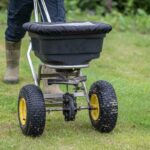Plastic tarps can protect your plants from frost, but they aren’t the most effective material you can use. Instead, you’ll want to choose a cotton fabric for better results. If your plants touch the plastic, they can quickly freeze.
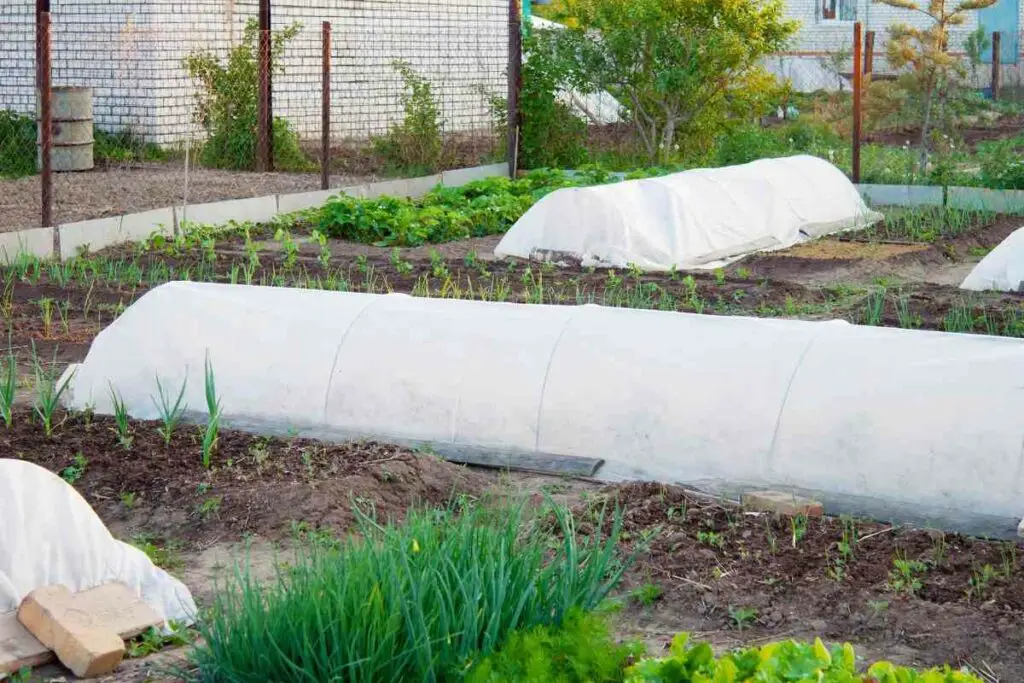
Protecting your plants from frost is simple.
The more you know, the better your garden will do.
All the details are in this article, so keep reading.
Table of Contents
Do Tarps Protect Plants From Frost?
Plastic tarps aren’t a good choice, although they can work in a pinch when you have nothing else.
However, you’ll need to take more care when using a tarp. The plastic can trap moisture inside since it’s not breathable. That makes it easier for your plants to freeze under the tarp.
If you use a thin plastic tarp, the material can stick to the leaves. When you pull the tarp off in the morning, all your plant’s leaves can go with it.
Lastly, heat becomes trapped inside if it gets hot while the tarp is on your plants. If the temperature rises too high too fast, your plants are sure to wither.
Overall, other materials are better suited to protecting your plants from frost.
How Do I Use a Tarp to Protect My Plants?
Still, you can use a plastic tarp if you have nothing else.
You’ll need to set the tarp up correctly, with it not touching the leaves. You can do this by holding the tarp down with stakes.
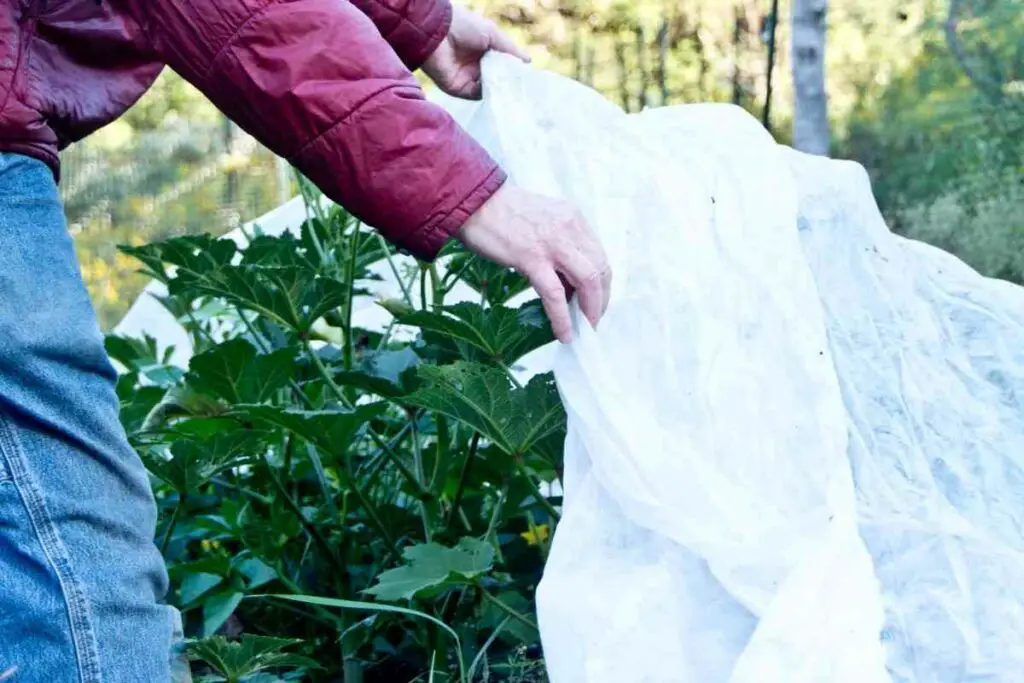
You’ll want to ensure that you remove the tarp when the frost is over so the plastic doesn’t freeze to your plants.
Plus – You’ll need to make sure that you take the tarp off if the temperature goes up.
However, you’ll protect your plants better if you use cotton material. It’d be best to buy cotton coverings to replace the plastic tarp as soon as possible.
What Can I Use to Protect My Plants From Frost?
You can use a few different materials to keep your plants safe— you likely have some of these already at home.
These options include:
- Newspaper
- Cotton covering (sheet, blankets, towels, etc.)
- Linen towels or blankets
- Burlap bags
- Cardboard
- Inverted coolers and other containers
All of these materials are more breathable than plastic. They won’t trap moisture underneath them and should help to keep your plants from freezing.
How Do I Protect My Plants From Frost?
Once you’ve gathered your materials, you’re ready to set them up in your garden.
Before you start, if you have any potted plants or seedlings, you can quickly move them into a shed or indoors to protect them.
Next, cover your plants with the above items. Sheets, cardboard, towels, and blankets are some of the best options.
You should do this if you expect a freeze of 28°F (about -2.22°C) to last for at least five hours.
Gardening blankets or row covers are best for larger gardens.
These large gardening sheets come in different thicknesses, so you can choose one that suits the frost drops in your area.
Just place the covering over the plants to keep them safe.
Key Takeaway – You must cover your garden before a big frost. Coverings prevent the cold air from directly contacting your plants, so any moisture on them doesn’t freeze. Plus, the coverings help trap warm air rising from the ground. Skipping the cover causes your plants to freeze and wither quickly.
Why Should I Cover My Plants?
Plants you just put in your garden are much more susceptible to frost than established ones.
If you don’t protect them, the plant cells will start to die, ruining your garden.
When you’ve already put a lot of work into your plants, you don’t want to let them wither due to a frost.
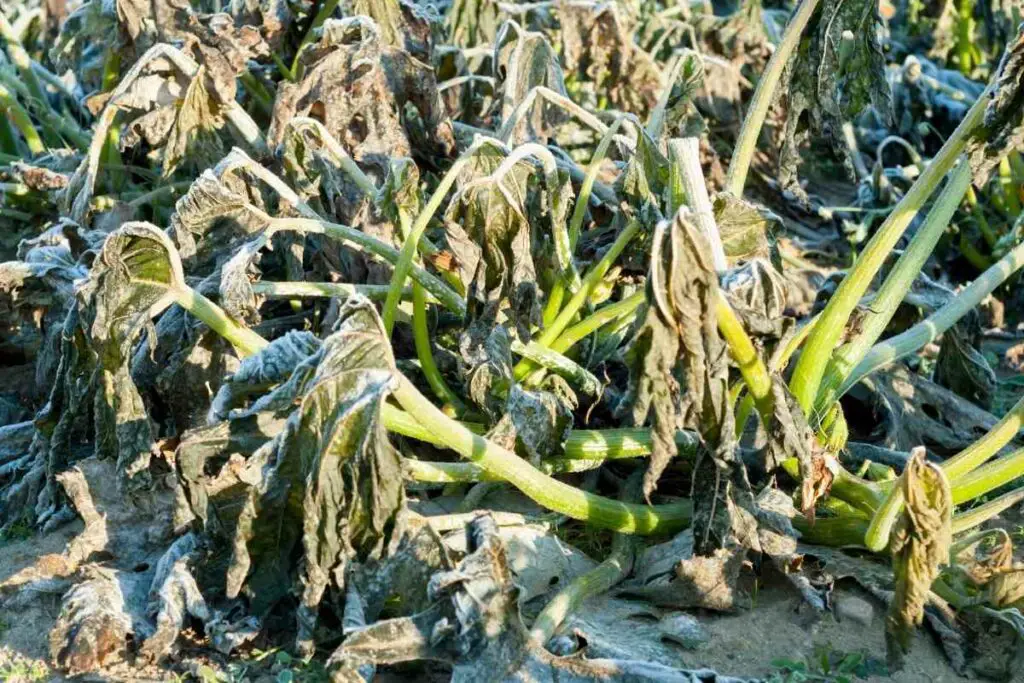
Depending on where you live, significant frosts can be more unpredictable.
A single early freeze can devastate entire gardens, so it’s not something that you should take lightly.
Covering your plants can help them thrive and grow, even if you planted them earlier in the season.
When Do I Cover My Plants Before a Frost?
Next, it’s also crucial that you cover your plants at the correct time.
You should protect your plants at night, then remove the coverings when the temperatures return to above freezing during the day.
You don’t want to leave them covered after it gets above freezing outside because it can get too hot under there for the plants. Removing the covers also gives the soil time to warm up in the sunshine.
Some of your plants won’t survive cold snaps even when under a covering. You’ll want to ensure you know what plants can stay outside during the cold months and what ones you need to bring inside.
In Short – Always cover your plants the night before a big frost comes. Keep in mind that it’s colder closer to the ground, so a frost can still happen even when it’s slightly above freezing outside.
The Farmer’s Almanac and online weather reports are good sources for determining when a frost is on the way.
How Can I Predict a Frost?
Experienced gardeners will learn how to predict a frost with time.
Make sure you keep updated with your local weather sources. Although, it is possible to predict a frost on your own with some accuracy.
Clear skies with dropping temperatures in the afternoon can signify an incoming frost.
You shouldn’t have to worry if there are clouds since they trap enough warmth in the area to prevent a serious frost.
High humidity levels also mean there won’t be frost. As moisture evaporates off the plants, it generates heat, preventing the leaves from freezing.
The more time you spend outside working on your garden during cold weather, the more you’ll learn about predicting frosts.
Eventually – You’ll be able to tell when one’s on the way without help. Still, it’s better to check the weather often, so you don’t miss anything important.
What are the Signs of Plant Frost Damage?
If you don’t cover your plants in time, they’ll likely take on some frost damage.
These are the most common signs:
- Drooping or shriveling leaves
- Changes in color
- Stem splitting
- Wilting
- Brown, crunchy leaves
- Signs of overwatering
Can a Plant Recover From Frost Damage?
You shouldn’t throw out any plants that take frost damage because you still might be able to save them.
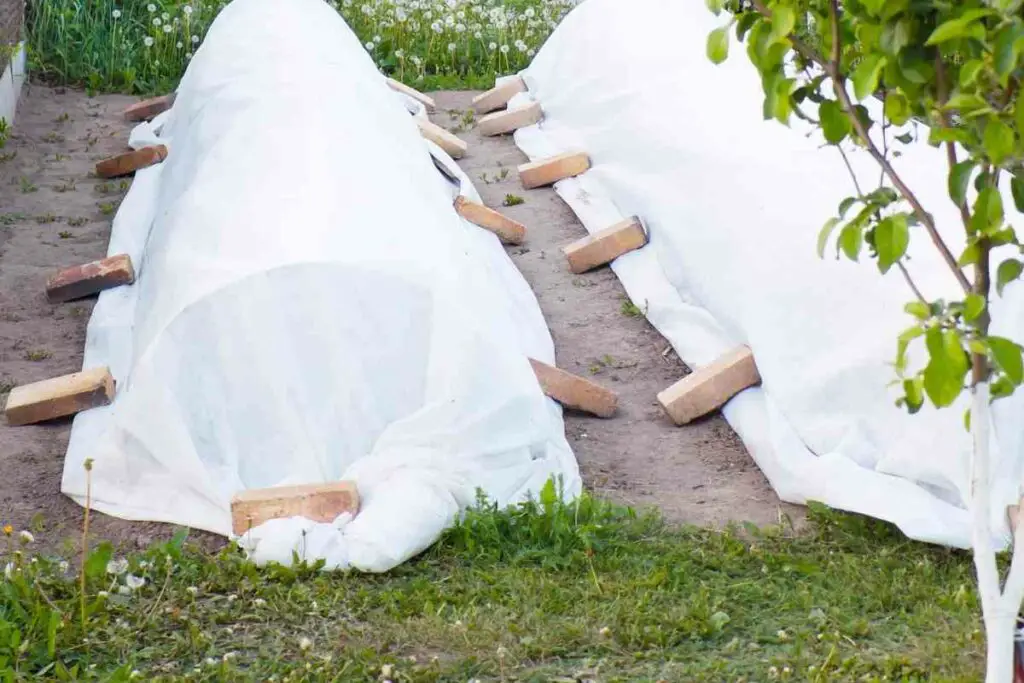
Many plants resist the cold, so getting rid of them is a waste.
Recovery does take a lot of time, however. New plants might sprout when the weather becomes warmer or the plant slowly makes a comeback.
You can help the plant revive faster by bringing it inside where it’s warm.
Prune any dead foliage off the plant and give it some water. It might not be possible to bring your entire garden into your shed or house, but you can always save some of them after a frost.
After, leave the plant alone to recover— giving it fertilizer or other additives can be harmful during frost recovery.
So yes, a frost-damaged plant can recover, but you’ll need patience. It can take a very long time, which is why it’s better that you cover the plants with something before a freeze instead.
Conclusion
Plastic tarps can protect your plants from frost, but they aren’t the most effective material you can use. Be aware if your plants touch the plastic they can easily frost.
You can use a few different materials to keep your plants safe— you likely have some of these already at home.
These options include:
- Newspaper
- Cotton covering (sheet, blankets, towels, etc.)
- Linen towels or blankets
- Burlap bags
- Cardboard
- Inverted coolers and other containers
All of these materials are more breathable than plastic. They won’t trap moisture underneath them and should help to keep your plants from freezing.
- How to Dry Basil Leaves: A Professional Guide
- Is an Avocado a Fruit or Vegetable? Simple Answer and Explanation
- Does Pineapple Have Seeds? Exploring the Anatomy of Pineapples
- Blooming Through Winter: Can I Grow Vegetables Indoors in the Winter?
- What Can You Grow in a Greenhouse All Year Round: A Guide to Year-Round Greenhouse Gardening
- Are Blueberries Blue? Debunking the Myth of Their Color















